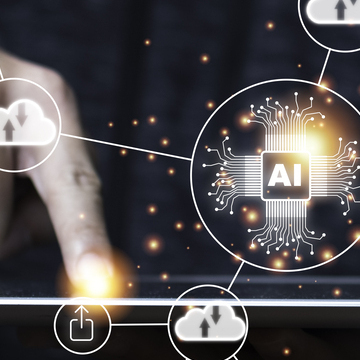



Next Generation is the New Generation in Customer Experience
If companies play their cards right, pandemic-related digital transformations can be a great opportunity
As global pharmaceutical firms laud their achievements in vaccine trials, the stock markets are beginning to take notice. As this murmur of positivity made headlines just in time for the holiday season, conversations across the globe have shifted to whether we could be reaching the beginning of the end after a year predominated by the pandemic.
When it comes to customer-experience solutions, Covid-19 has—as in other sectors—caused a radical shift. In some cases, it has accelerated patterns, while in others it has crystalized some of the sector’s previous tendencies, which can only signal what’s to come this coming year and beyond.
As we witnessed in the 2009 downturn, if companies react quickly and organize themselves well, there are many opportunities to be gained from this crisis.
NEXT GEN FOR THE “NEW GEN”
Industries that have delocalized as well as Born Digital companies have been riding the crest of the lockdown wave since March, reveling in a business model that has shielded them more successfully than other traditional industries. There has been a noticeable increase in this arena: Atento has seen Born-Digital company volumes nearly doubling and tech company volumes growing more than twofold compared to last year.
An obvious example is the online food-delivery sector, which has escaped relatively unscathed compared to the “for sale” signs that have emerged overnight in the window displays of local Main Street eateries. The trend points in one direction alone for a new generation of enterprises that will emerge from this post-pandemic world: Digital.
These companies will benefit from our learnings over the recent months, and they will be able to build agile robust digital infrastructures that will withstand the test of time.
DIGITAL ACCELERATION AT LIGHTNING SPEED
Elsewhere, industries that were taking baby steps into the digital customer-service arena, have been thrust into the driver’s seat, navigating their way along the bumpy tracks and swerving the many pitfalls as they learn on the fly.
Enterprises that really want that competitive edge, however, will not triumph by merely keeping pace. They need to get ahead. Now. And they need to ensure that whatever they inaugurate will stick and, perhaps more importantly, that it could withstand any interruptions, in the wake of another crisis.
Disruptive technologies such as AI, analytics, and automation can and must be used by companies for successful customer management and contact, whether it be in the banking, telecommunications, or health sector. There are vast benefits to be gained from these technological advances across the board.
For companies not willing to foray entirely into the digital sphere, the recent experience will, at the very least, give them a few pointers about what is required when the time inevitably comes to transition.
CUSTOMER FOCUS REFOCUSED
Certain companies that chose to offer temporary Covid solutions may now find there’s no going back. Customers are now accustomed to a broader range of omnichannel alternatives and these demands are forcing brands to deliver these options to provide a positive and hiccup-free customer journey. Implementing a purely customer-led solution requires careful monitoring but, if executed successfully, is a clear example of how the crisis can provide companies with new opportunities for growth and success.
But we are not talking tech for tech’s sake, this is tech with a human touch. Over the past few years the customer has evolved with an expectation to engage in a very different way, a much more personalized end-to-end experience, where the agent on the other end of the phone, chat, or email anticipates why they have been contacted and proactively and efficiently addresses all of their concerns or wishes. Integrated Multichannel solutions can help combine automated and agent-led integrated channels delivering that seamless individualized customer experience.
THE ENTIRE BUSINESS WORLD TURNED VIRTUAL
The overnight makeshift offices that appeared in our homes last spring may not become a thing of the past. With many of the tech giants proclaiming that working from home is the new normal, it is inevitable that other sectors will follow their lead. This is something that Atento embraced wholeheartedly, moving 72,000 employees to remote workspaces within three months at the onset of the pandemic, proving agility and adaptability in an entirely remote operation.
Digital labor and hybrid models of various shapes and sizes will require innovative, swift, and successful workable and scalable solutions, that offer both effectiveness and productivity in the virtual workplace while not reneging on first-rate user experience.
But it doesn’t stop there. The virtual office requires an integrated approach to all systems, including back-office processes such as digital recruiting and onboarding, scheduling, and forecasting. Elsewhere, the effective use of AI can compute all the necessary data, refocusing it to allow company leaders to pinpoint specific areas where attention is needed, leading to smarter business decisions that could conceivably reduce lead time and ultimately benefit their revenue.
Digital will be the solution to the recovery for many aspects of post-pandemic life in the CRM/BPO sector. But its adoption needs to be smart, focused, and timely. And the technology alone is not enough. Those companies with the capacity to act at killer speed, while also being agile, adaptable, and incorporating the human touch as part of the solution, will tick all the boxes for customer experience and set the pace going forward in the new organizational arena.
Carlos López-Abadía, Atento´s CEO
This article was originally published here.





